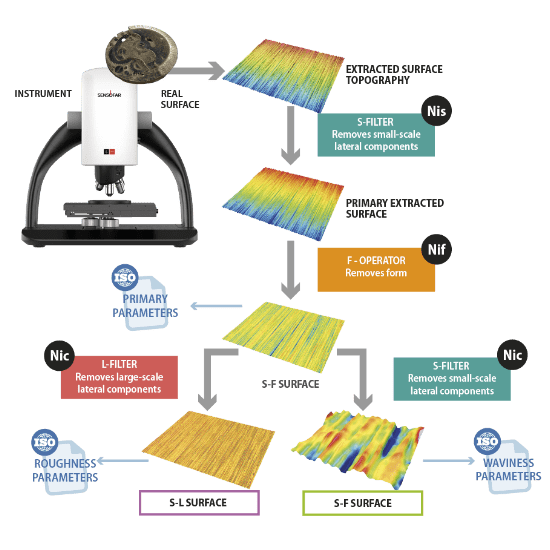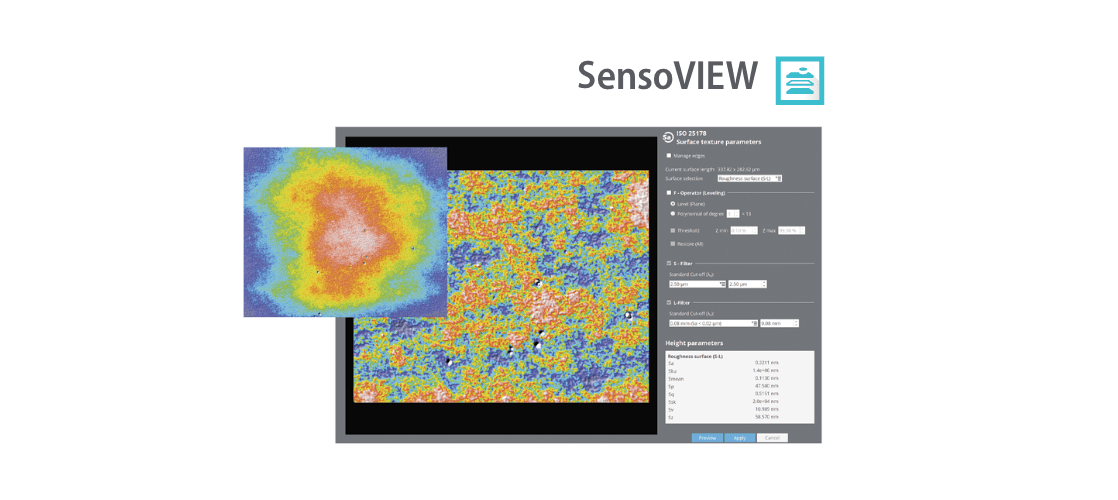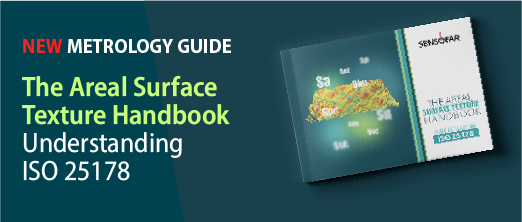Filtering is an essential step in surface texture analysis, enabling the separation of surface features such as roughness and waviness to extract meaningful parameters.
SURFACE FILTERING
Why filter a surface?
Filtering is critical in surface texture analysis, ensuring noise, form, and large-scale features do not interfere with roughness or waviness evaluation. By isolating specific wavelength components, filtering refined topographies into scale-limited surfaces enables precise comparisons and reliable parameter extraction. This process is essential for achieving accurate measurements that meet functional and quality standards.
ISO 25178 WORKFLOW
How to filter your surface
ISO 25178 establishes a structured filtering process involving S-filters, L-filters, and F-operators to refine surface data. These tools systematically isolate noise, form, and specific surface features, enabling the accurate calculation of Primary, Roughness, and Waviness parameters. This workflow ensures precise characterization and compliance with industry standards.
ISO 25178 establishes a structured filtering process involving S-filters, L-filters, and F-operators to refine surface data. These tools systematically isolate noise, form, and specific surface features, enabling the accurate calculation of Primary, Roughness, and Waviness parameters. This workflow ensures precise characterization and compliance with industry standards.








